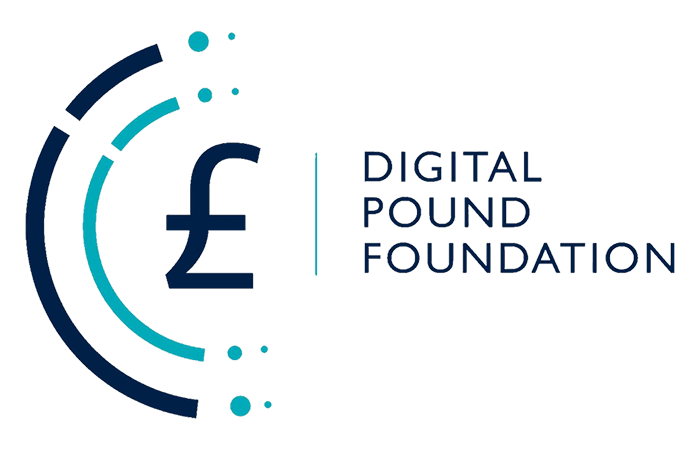Co-authored by Jannah Patchay, Jim Ford and Phil Kenworthy, on behalf of the Digital Pound Foundation’s Policy, Legal and Regulatory Working Group
The House of Lords Economic Affairs Committee (EAC) published a report, in January 2022, entitled “Central bank digital currencies: a solution in search of a problem?”. The report’s publication followed the EAC’s Call for Evidence on CBDC in 2021, to which a range of market participants – from both traditional financial institutions and industry associations, as well as challengers and emerging players in the digital money space – had provided both oral and written responses.
As indicated by its title, the report appeared to pour lukewarm water on the concept of CBDC – specifically retail CBDC – and concluded that there is no convincing case for why the UK needs a CBDC. Furthermore, the EAC found that, while a CBDC may provide some advantages, it could present significant challenges for financial stability and the protection of privacy. Key amongst the risks raised were: security – of both individual accounts and “centralised” infrastructure; risks to the financial system and to financial stability, in the event of outflows from commercial bank money into CBDC; and the perceived inability to reconcile privacy and potential anonymity at a transaction level with prevention of criminal activity.
CBDCs are more than a solution to a problem
The report was narrow in scope, and did not consider the extensive work being undertaken in other jurisdictions. Many central banks have carefully considered the challenges raised in the report and have developed a range of design solutions to address these, none of which were referenced or considered in this report. These include the efforts by central banks as diverse as Sweden’s Rijksbank and the Central Bank of Kazakhstan, developing designs that protect user privacy whilst also ensuring the integrity of the financial system. The Bank for International Settlements – an umbrella group for central banks – has not only signalled to central banks that they should begin to turn their attention towards CBDCs, but continues to lead the way in research efforts.
In the Digital Pound Foundation’s (DPF’s) view, the report’s major shortcoming was its lack of vision. The conclusions of this report are disappointing, as it suggests that CBDCs are a solution to a problem that doesn’t exist. This is a very narrow view of innovation – it is not only about solving problems but also about creating new opportunities. There is a well-catalogued set of use cases and applications for CBDCs, including the potential for more effective policy delivery in the public sector.
CBDCs are one of the key building blocks that will enable the UK’s transition to a more sustainable, inclusive digital economy. A well-designed CBDC has the potential to deliver benefits that extend far beyond greater payments efficiencies. Having one that offers competitive and attractive features in its design and supporting market infrastructure can also create a platform for innovation across all sectors of the economy, and open up opportunities for the UK on the global stage.
What does the Report mean for CBDC in the UK?
The output of the report represents less a directive – or even a recommendation to policymakers and legislators – and more the posing of a set of questions to be answered by the HMT-BoE CBDC Taskforce. Many of these questions are already either well within the scope of the Taskforce, or have even been covered extensively elsewhere in the Bank’s previous publications, such as the 2020 Discussion Paper on retail CBDC and the Discussion Paper on New forms of digital money issued in June 2021.
The Bank’s work on CBDC research continues, and indeed has been given added impetus, following the announcement in April 2021 by HMT and the Bank of England of their joint CBDC Taskforce, formed with the intent of coordinating exploration of a UK CBDC. The Bank also followed this later in September 2021 with the establishment of its CBDC Engagement and Technology forums, gathering strategic input from a range of industry stakeholders on policy considerations, functional requirements and technology aspects of CBDC.
The report recommends that the joint CBDC Taskforce should include additional representation from consumer groups in its activities and on the Bank’s Engagement forum. Certainly, the current list of participants – and indeed evidence contributors to the report itself – skews quite heavily towards the business and academic sectors. The inclusion of diverse and widely representative range of organisations and viewpoints, throughout the process of exploring, designing and implementing a CBDC, is something that the DPF wholeheartedly champions.
Addressing security and resilience
On a case-by-case basis, it is not difficult to provide rebuttals to the points raised by the report. With respect to security, wallets or accounts offered by a range of payments interface providers (PIPs), as envisaged by the Bank of England, would be subject to the same or even greater levels of security as in place for online banking services today.
The report raises the question of how a CBDC can ensure privacy safeguards whilst also meeting financial crime and market stability objectives. At present, cash is the only form of money to provide total privacy; however cash as gives rise to physical risk for the holder (i.e. loss or theft) and is itself a conduit for illicit transactions. As cash continues to decline in use for everyday transactions, most people are either comfortable with oblivious to the monitoring and surveillance of their bank, credit card and Paypal (or other) transactions. Many central banks are currently exploring CBDC designs that can provide anonymity at the transactional level between two parties, whilst also ensuring that appropriate macro-level transaction monitoring capabilities can be supported.
With respect to the CBDC infrastructure itself being a single point of failure, this is always a risk for centralised systems (including the Bank of England’s own systems today) and is managed through the implementation of disaster recovery planning, which typically includes systems and data being hosted at secondary or even multiple sites. The report also presupposes a centralised architecture. It is possible also for distributed ledger technology (DLT) to be used as the basis of a more resilient architecture, whereby a multiplicity of nodes could be operated by PIPs, offering in-built disaster recovery capacity as well as greater cybersecurity.
The UK’s payments system – evolving or nearing extinction?
The report argues that the UK already has an efficient payments system. This is indeed true, from a domestic payments perspective, although the multiplicity of infrastructures does make it complex and challenging for new entrants to navigate. The New Payments Architecture (NPA) is held up as an example of significant innovation in the payments sector. It is not clear how closely the report’s authors examined that particular beast, given the absence of significant progress since its inception in 2015.
CBDC also offers potential functionality that is beyond the technological capabilities of traditional payments infrastructures, such as the ability to develop smart payments and programmable money. In light of these factors, the possible advent of a CBDC could provide an excellent opportunity for UK authorities to stop and take stock of the payments roadmap.
Wholesale vs retail CBDC
The report was generally more favourable towards wholesale CBDC, particularly with respect to its potential to enable greater efficiencies in wholesale trading and settlement, although it states that barriers to cross-border CBDC payment and settlement are formidable. This would be true regardless of the solution adopted – as is the case today. Nevertheless, growing numbers of national faster payments infrastructures are being linked up with each other. China is already seeking to develop a cross-border payments system over the next five years, which will incorporate both traditional fiat and CBDC. This alone should give pause for thought, with respect to the UK’s global position now and in the future.
Recent projects such as Project Jura, conducted by the Bank for International Settlements (BIS – a network of central banks globally), along with two European central banks, the Banque de France and the Swiss National Bank, demonstrate the seriousness with which other central banks are taking the potential capabilities of wholesale CBDC. Project Jura explored the settlement of tokenised Euro commercial paper and foreign exchange (FX) transactions, in tests that were conducted in a near real-life setting, within the confines of participants’ existing regulatory regimes. In 2021, Benoît Cœuré, CEO of the BIS Innovation Hub, signaled to central banks around the world that they should start working on CBDCs, particularly if they are to remain relevant in the face of emerging private sector stablecoins and other digital assets.
The report also claims that a wholesale CBDC payments system would be less disruptive than a retail one. This is not necessarily true, particularly given that wholesale payments tend to be for far larger amounts, and interact with far more complex markets such as securities, derivatives and FX. The DPF has previously questioned the need for separate retail and wholesale systems.
Commercial banks, credit creation and the risks of disintermediation
There are indeed potential risks with respect to outflows from commercial bank money into CBDC, and the impact that this might have on commercial banks’ credit creation abilities. These have been discussed extensively in the Bank of England’s New Forms of Digital Money paper as well, with various models considered as to how these concerns can be addressed. There is indeed potential impact, as identified by both this report and the Bank, for commercial bank money, its creation and the wider effect on lending and financing activities. However, this should not necessarily be viewed as a blocker to the adoption of new forms of digital money, including CBDC.
The report raises the risks of banking sector disintermediation, arising from the success of a CBDC, and potential knock-on effects for credit allocation and financial stability. It could equally, however, be argued that an innovation which causes some banking sector disintermediation – or opens up opportunities for a wider range of participants, in the form of the PIPs – is in fact the essence of competition and should not be dismissed out of hand. Concerns around this risk could also be dealt with, at least in the early days of CBDC adoption, by limiting CBDC issuance size and hence the total CBDC in circulation (to levels akin to the M0 measure of notes and coins in circulation), and indeed this is noted as a potential mitigant elsewhere in the report. Finally, the role of commercial banks may continue as PIPs, and new business models can be created that accommodate the introduction of CBDC.
The case for public money
From a retail perspective, the past 30 years has seen a significant shift in transactions from public money into private commercial money. The DPF believes that continued access to public money is of fundamental importance to maintaining trust within the UK’s banking system. Despite the rise of commercial bank money and the corresponding decline in cash usage, cash remains an intrinsic part of the money ecosystem and millions of UK citizens still depend on using it for a number of reasons.
The Bank of England (along with every other central bank that is considering a CBDC) must consider the implications of this shift towards private money, and the extent to which the general public should have a right to access public money in the future. Is the ability to access public money a fundamental right of UK citizens, and therefore one that should be preserved even as use of cash continues to decline? Public money also represents a fundamental policy delivery mechanism for the government. A more radical shift towards greater use of private money could result in a system whereby some members of society are left behind due to the focus of the private sector on more commercially advantageous customers.
In the DPF’s view, the Committee could have reflected further on this fundamentally important issue, as any conversation around the future of digital money in the UK must reflect upon the role of money in our society. Sir Jon Cunliffe’s excellent speech to the OMFIF Digital Money Institute in May 2021 fleshed out many of the issues around this. As a digital form of public money, a CBDC could have significant benefits for the public and also act as a potential differentiator and accelerator of innovation for a global Britain.
The nature of money in a changing world
New forms of money, including CBDC, are no stand-alone freak of monetary innovation. Money is a servant of a greater force: value interaction. It is not the driver. The primary driver for the evolution of money is now the digital revolution. And one of the most powerful forces for change within that revolution is the mechanism by which something is exchanged for something else. The new mechanism – indeed the revolution itself – was only made possible by advances in computer technology, and by the internet. Together they spawned a host of new ‘technologies’ (including artificial intelligence, digital identity, robotics, bionic adaptation, blockchain, algorithmic disciplines, quantum computing, and many more).
As a result, even the things that are being exchanged are changing. Assets are being tokenised, fractionalised, adapted and qualified in ways never before possible. The entire exchange process is undergoing change. On top of this, the shift to a digital economy – and the new operating system underpinning it – has the capacity to better reflect our changing and much-needed attitudes to value, particularly the ways in which value is impacted by environmental and social outcomes. The nature and functionality is rightly adapting to facilitate this metamorphosis. Our view is that any commentary on new forms of money, including CBDC, must sit within this new, all-enveloping construct.



































































